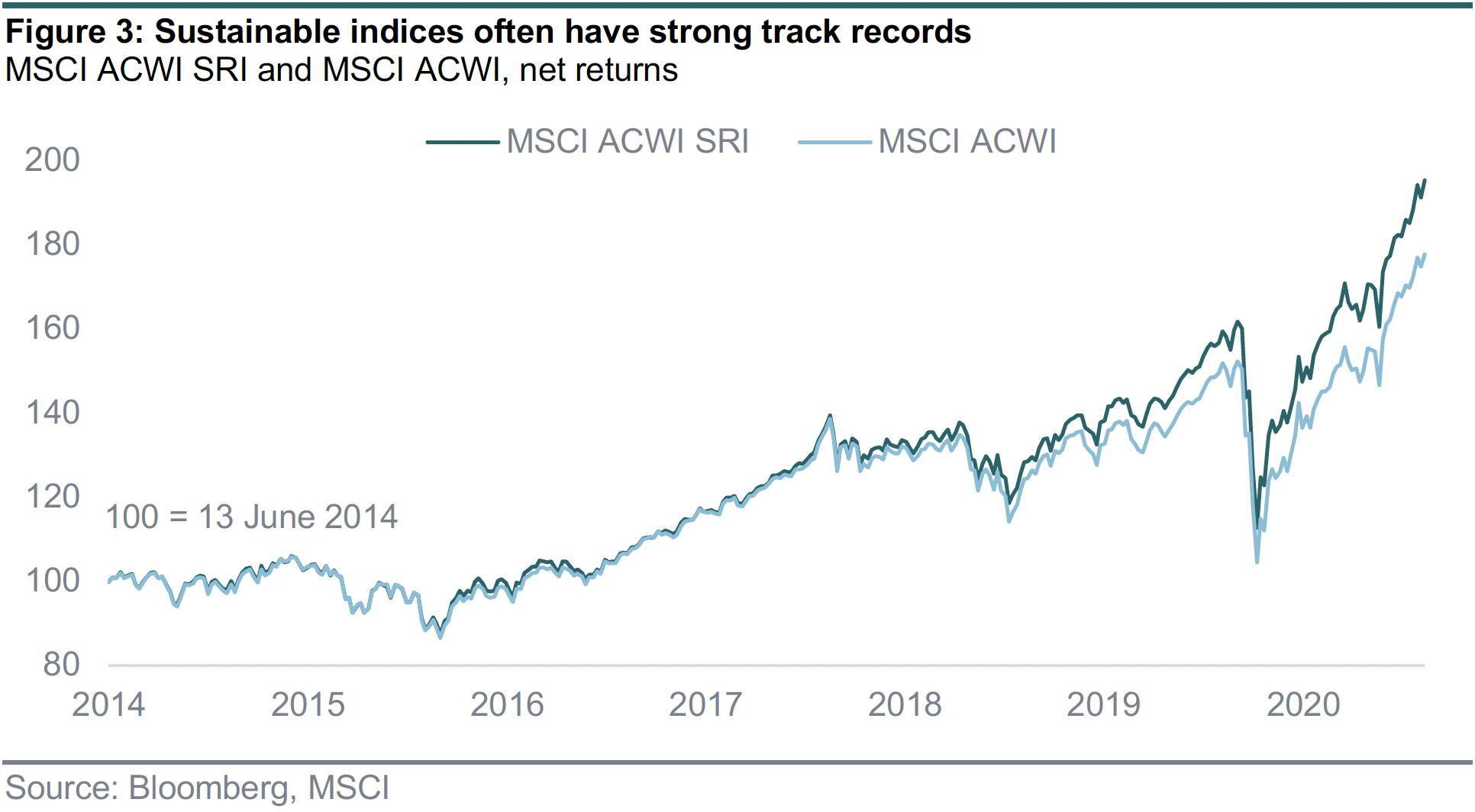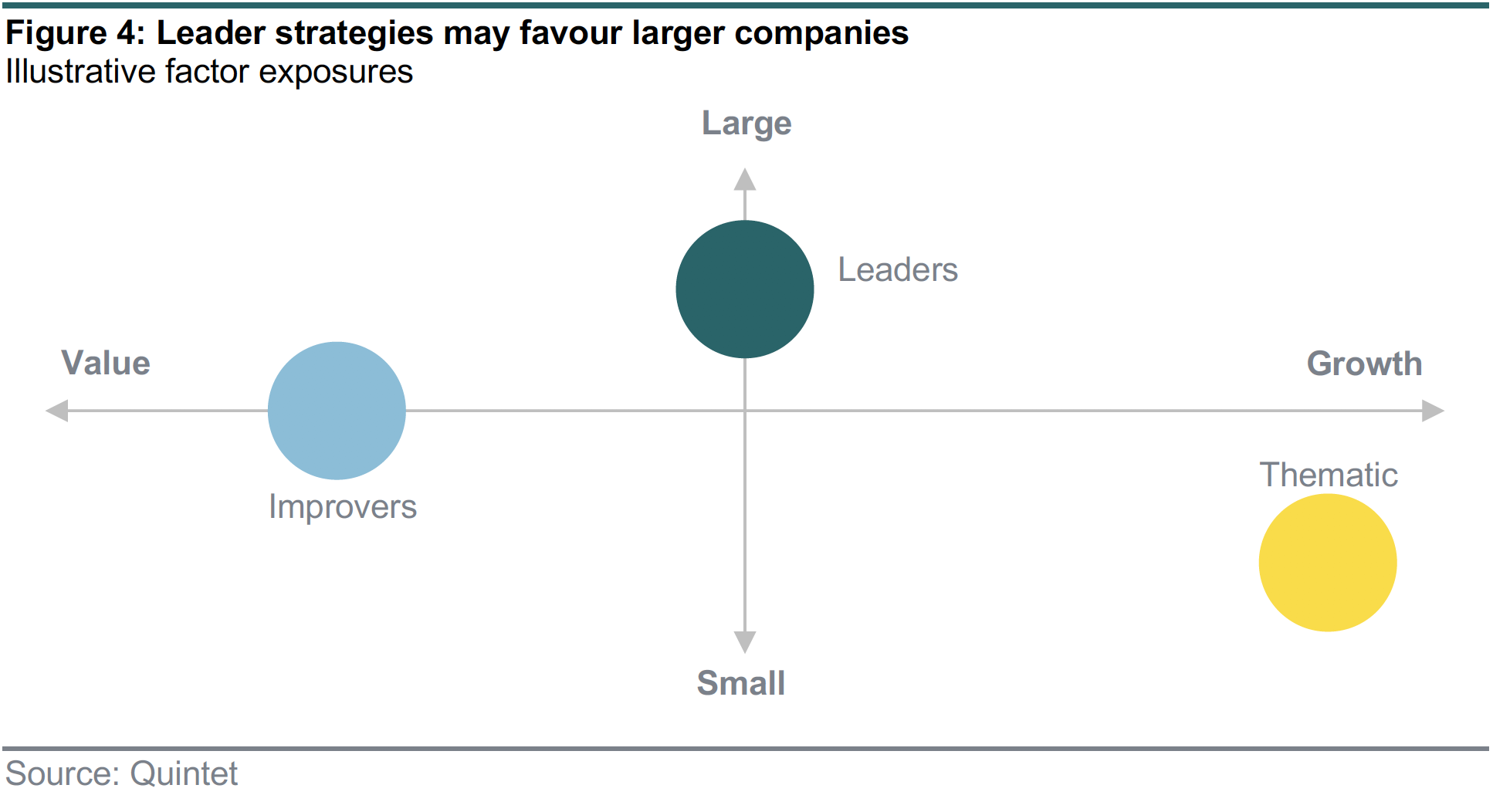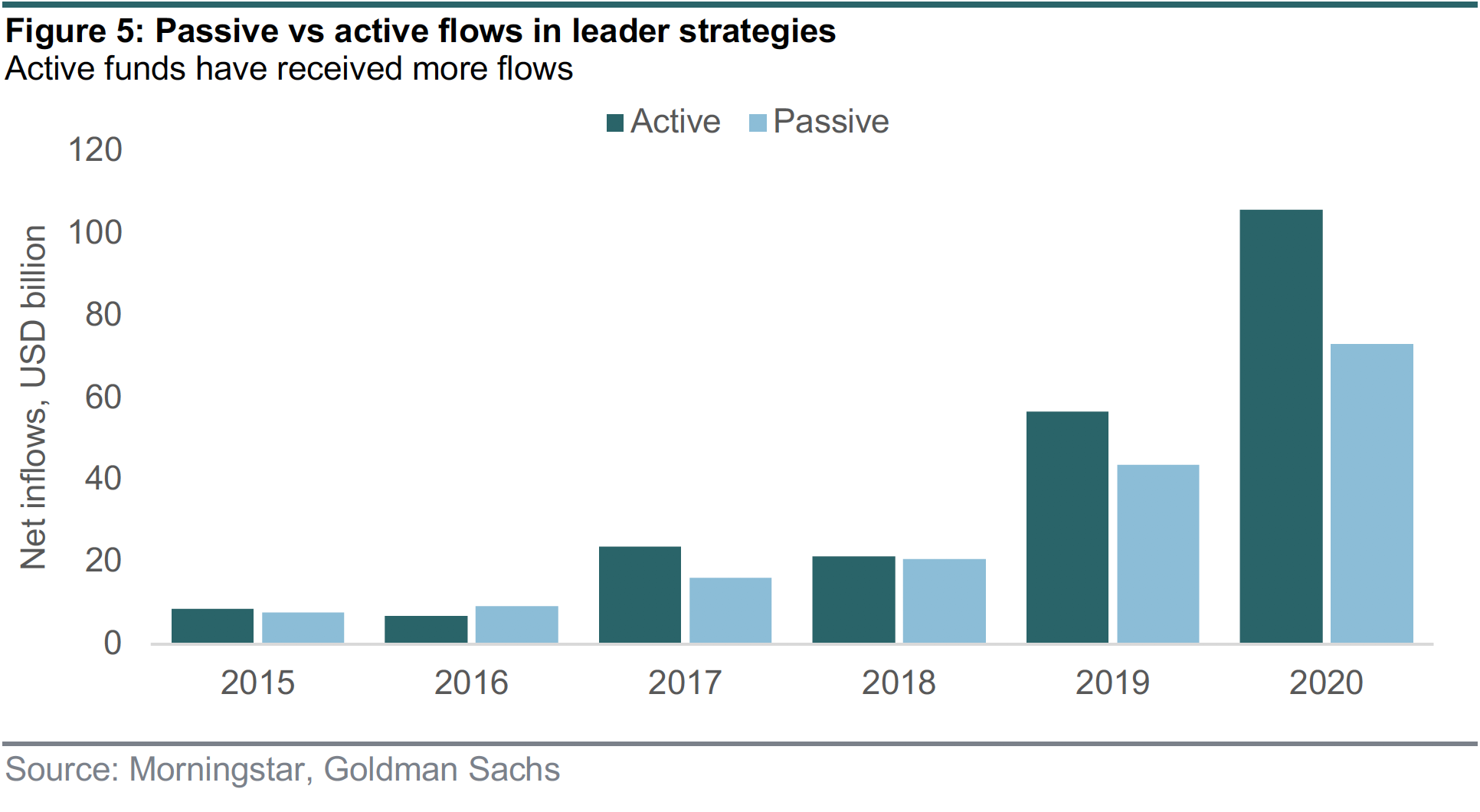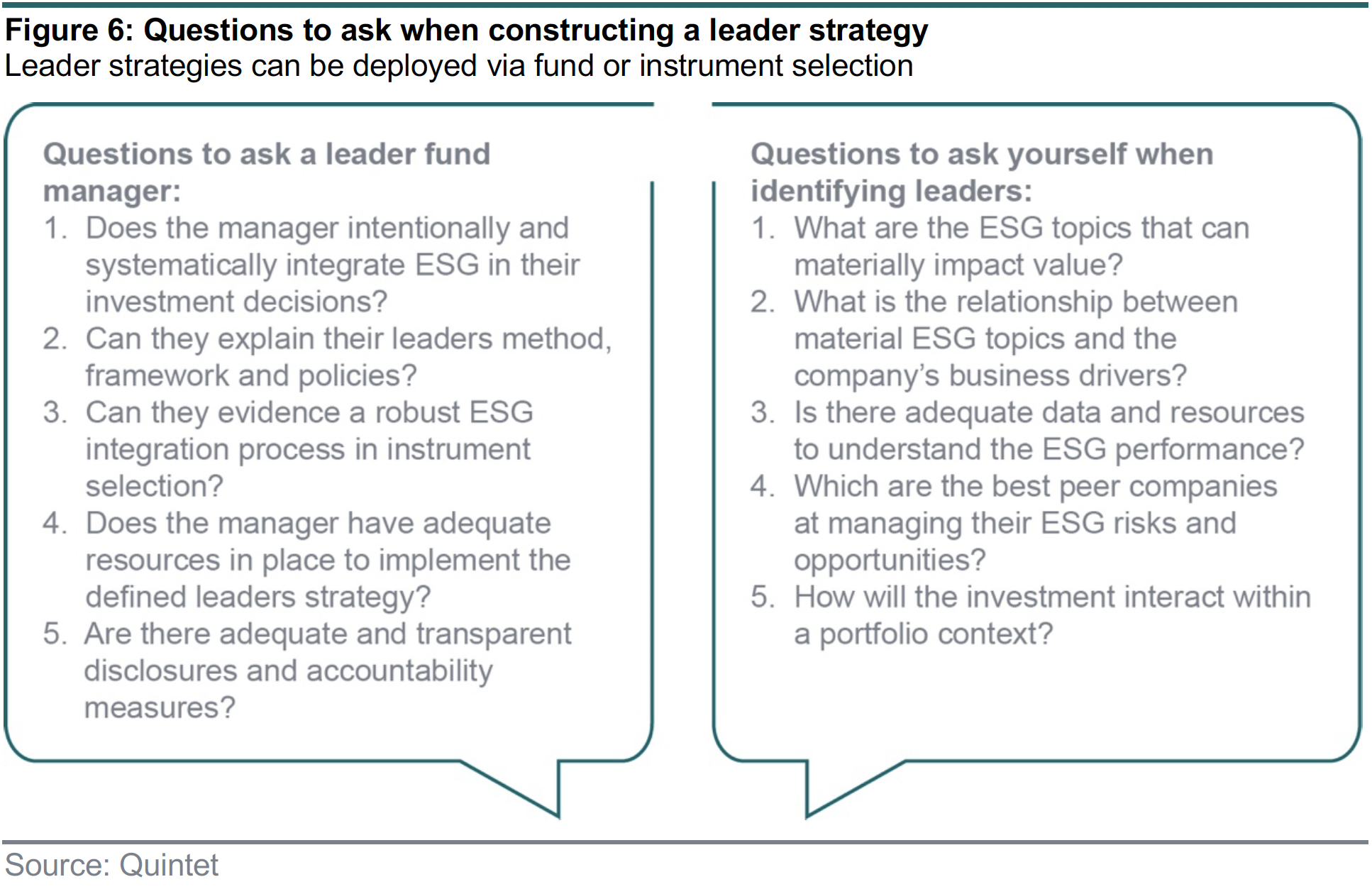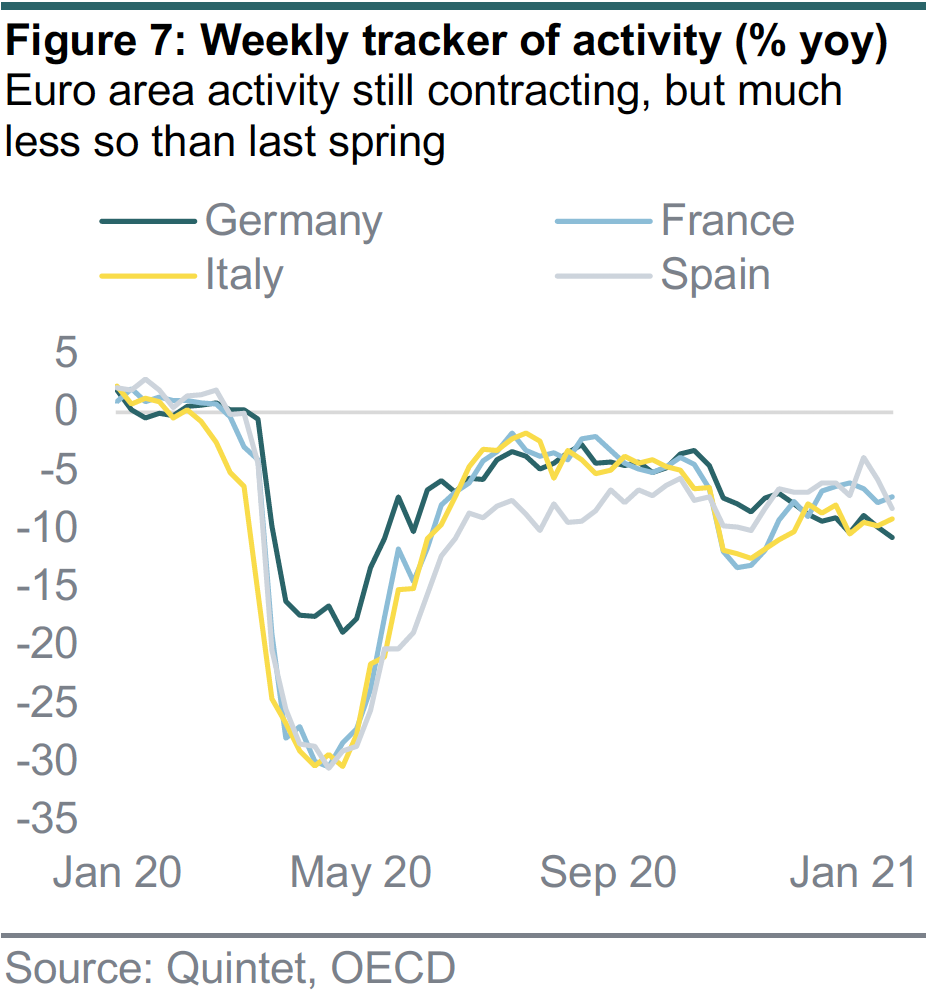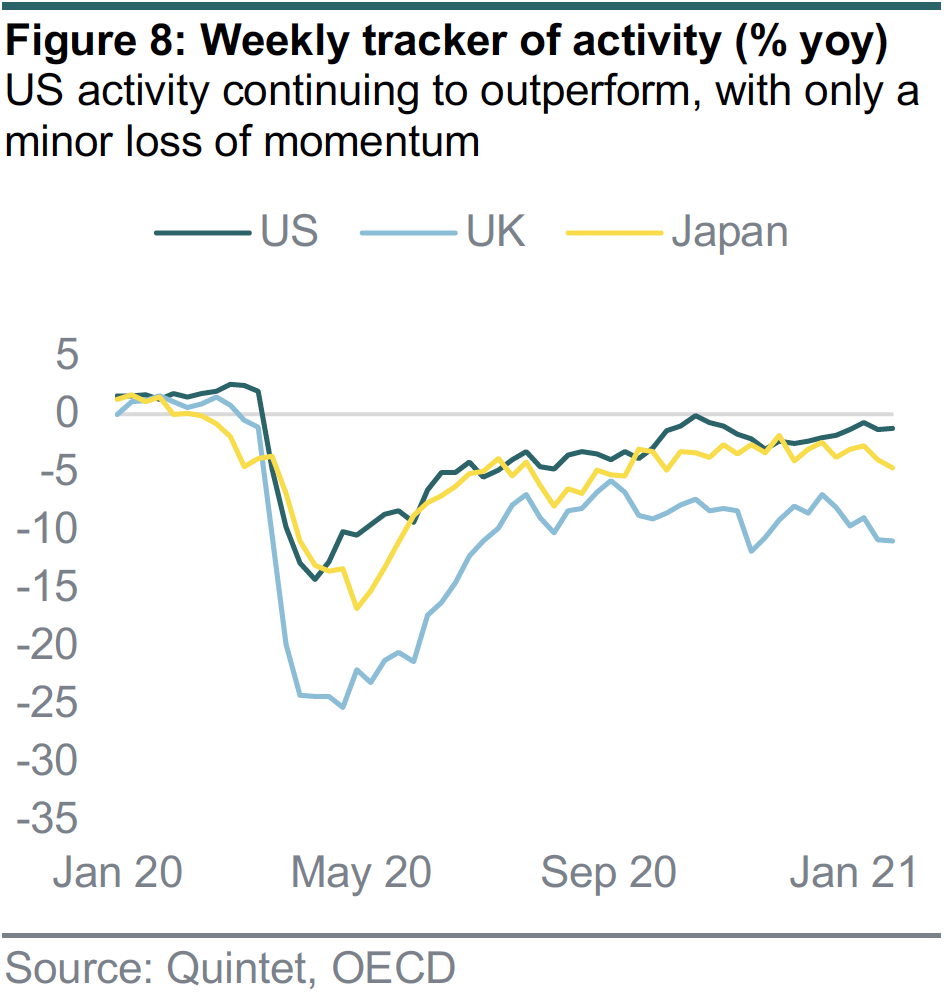Leader strategies, also known as “best in class”, seek to identify entities that are managing their environmental, social, governance (ESG) risks and opportunities better than their peers.
What is the investment thesis?
Investors deploying leader strategies expect fewer adverse events – such as accounting scandals. They believe that a holistic approach to business will generate improved cash flows through factors such as increased customer loyalty, greater employee productivity and collaborative supply chain partners.
How can leaders be identified?
Leader identification can be the result of ESG headline ratings, such as those provided by Sustainalytics or MSCI. This approach, while easy to implement, relies on third-party methodology and may oversimplify complex sustainability issues.
Alternatively, an investor can identify leaders by integrating material ESG information directly into their financial models, aiming to quantify the impact on revenue, risk and profitability.
At Quintet we combine leading industry standards, such as the Sustainability Accounting Standard Board, and in-house expertise to identify material ESG topics across a range of sectors. We give greater weight to factors that can impact value significantly.
For example, water is important for the food and beverage industry, as water scarcity could have an adverse effect on operational continuity. In contrast for banks, water scarcity has a negligible impact on operations (figure 1).
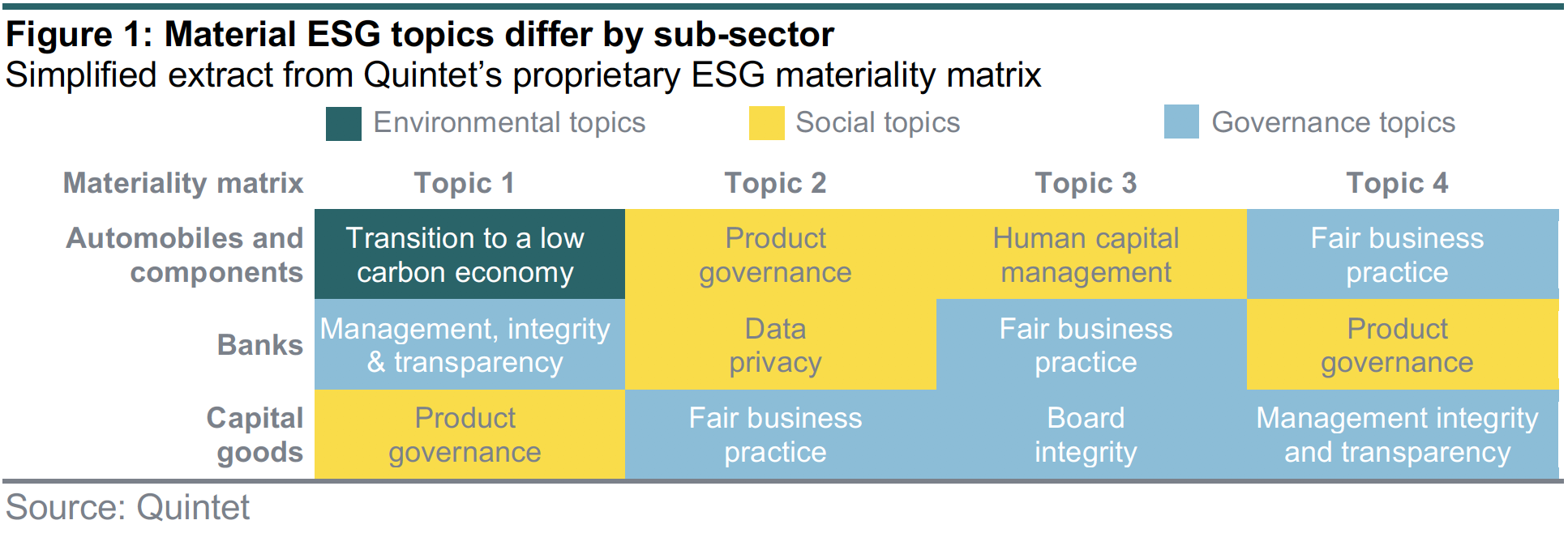
How does one construct leader strategies?
Leader strategies can be unconstrained and constructed without reference to sector or regional weights. This approach may lead to large deviations compared with conventional benchmarks as entire portions of the market may not be selected. Alternatively, leader identification can be implemented within sectors and regional peer groups, leading to smaller benchmark deviations but with a greater number of unintuitive selections, such as the leading base metal miner. In figure 2 we show how the two approaches would lead to differing leader identification.

Do leader strategies utilise exclusions?
It is estimated that 26% of sustainable investing fund assets combine a leader approach with additional exclusionary criteria.1 They include excluding entities with severe controversies and/or companies with revenue exposure to controversial activities, such as weapons or fossil fuels.
1. Goldman Sachs (2020). GS SUSTAIN: ESG Nifty Fifty Series How have ESG fund favourites changed in 2020: 30









